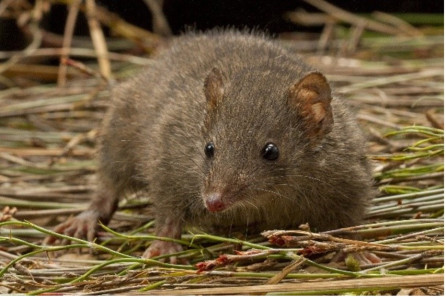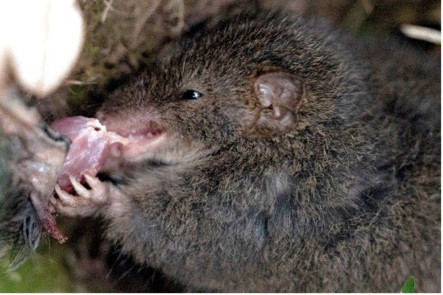© Pint of Science, 2026. All rights reserved.
I am sure many of you have seen a rat roaming the streets or your backyard. You may have even experienced the urge to trap and dispose of the possibly disease-carrying creature. But before you act on that urge, please stop to identify the mysterious rodent. Heed this warning, for if you accidentally harm the cannibalistic and sleep-deprived antechinus, its status as an Australian native will land you a $22,000 fine under the Biodiversity Conservation Act (2016). You may have been surprised to read that the antechinus is not only a cannibal but also a sleep-deprived one, but these recently discovered qualities are only two reasons this Australian native is so interesting.
First and foremost, the antechinus is not a rodent. It is a marsupial like a kangaroo or a wombat, which will protect its prematurely born young in their pouch as they develop. As well as not being a rodent, an antechinus is also not an echidna. This may seem like an obvious statement, but it appeared someone really wanted to emphasise this when naming the antechinus. ‘Antechinus’ is derived from the Greek ‘anti ekhinos’, meaning in our Australian context, ‘not an echidna’.

Image Credit: David Paul
Let us run through the 11-month timeline of a male antechinus.
0 – 2 months: An antechinus will latch onto its mother’s nipples alongside its siblings and half-siblings (we’ll get into that whole half-sibling thing later).
2 – 3 months: The young will follow their mother and learn to hunt and fend for themselves. After this training, they are fully independent and will leave mother to live their adult lives.
3 – 9 months: The male antechinus will go about their day-to-day whilst making sperm.
9 – 10 months: With sperm production having come to a close, the male antechinus now prepares himself for the self-destructive sex frenzy that is soon to come.
10 – 11 months: SELF-DESTRUCTIVE SEX FRENZY!
It is this self-destructive sex frenzy that the male antechinus is most well known for. To ensure that his genes are passed on, the male antechinus will scurry around from female to female performing mating rituals of up to 14 hours. They will do little else over the next few weeks, which comes with a price. The testosterone and stress hormones of the male antechinus will rise to dangerous levels that lead to his fur falling off, internal bleeding, and the failure of the immune system.
Still desperate for sex, he will rush around frantically seeking one more partner. But the females disgusted by the unattractive disease-ridden male, stay well clear. At the end of the mating season, the male antechinuses will simply collapse dead due to having too much sex. The overload of testosterone makes it difficult to regulate stress hormones, making their levels also increase. This leads to the immune system of the antechinus breaking down, and without any way to protect themselves from infection, they soon die. Following the death of their male counterparts, the females now release the sperm they have collected, to fertilise their eggs. Due to the females having several sexual partners, the litter often ends up having different fathers.
Researchers from La Trobe University have recently discovered that the male antechinus will reduce their sleep by three hours each night over the mating period. Whilst it may maximise mating opportunities, it only exasperates the poor condition of the male. Other researchers form the Queensland University of Technology and the Queensland Museum have also made a shocking discovery concerning male antechinus behaviour. They are cannibalistic and will feed on their mating competition that is dropping dead around them. These recent discoveries about the antechinus allow us to better understand them and will thus allow us to better protect the native marsupial.

Image Credit: Elliot Bowerman
So, the next time you see a “cute little mouse”, second guess yourself. That could actually be a sleep-deprived, sex-hungry, cannibalistic marsupial that is not an echidna.
References
Zaid, E., Rainsford, F. W., Johnsson, R. D., Valcu, M., Vyssotski, A. L., Meerlo, P., & Lesku, J. A. (2024). Semelparous marsupials reduce sleep for sex. Current Biology.
Baker, A. M., Bowerman, E., & Gynther, I. C. (2024). Cannibalism in the mainland dusky antechinus (Antechinus mimetes mimetes) during the breeding period. Australian Mammalogy, 46(2).
Yong, E. (2021, May 3). Why A Little Mammal Has So Much Sex That It Disintegrates. National Geographic. https://www.nationalgeographic.com/science/article/why-a-little-mammal-has-so-much-sex-that-it-disintegrates




